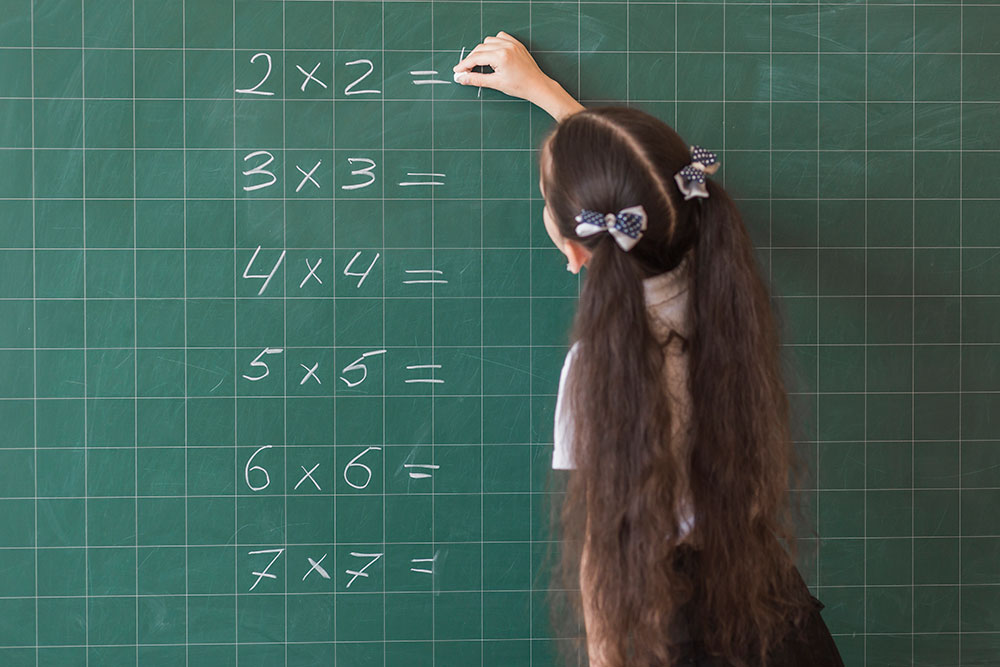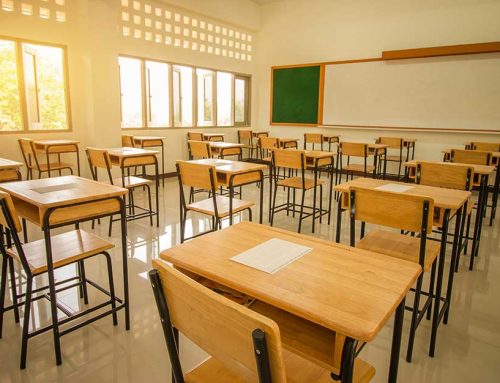How should a Math classroom look like to meet the current requirements of our students?
Gone are the days when a typical classroom environment consisted of desks, green boards, a preprogrammed teacher and a group of students, who were copying word to word everything that their teacher was writing on the board. Today’s classrooms are innovative learning spaces consisting of visual representations, reasoning and number sense.
Mathematics is an interesting journey and plays a vital role in a child’s learning. It is also an essential life skill in the process of learning. It helps students develop skills such as problem-solving skills, logical reasoning skills, and helps students develop spatial awareness. Children indeed need to develop a growth mindset to understand Mathematics. This growth mindset can be developed by learning through mistakes/ errors.
Role of a Math facilitator is to render their support to every student in a classroom
As we all know that all students may not connect to the concept/s through a boring lecture method and that there are several solutions to every problem. At , The Gaudium School, we believe that the role of a Math facilitator is not confined to just teaching or teaching in the traditional method but, we emphasize facilitating learning through visual models and a range of manipulative in classrooms. Our challenge is to cater to the needs of every child and this enabled us to think of innovative classrooms. Our prime focus on innovative teaching could be achieved through visual materials and manipulatives which aid our students to understand the concepts quickly and easily.
Innovative ideas for making math classrooms interesting for students
Roll Dice:
We can use dice in various ways to teach mathematics.
- One or two or three dice can be used to teach younger minds basic operations such as addition and subtraction
- Task1: We can ask a student to roll the dice either one or two or three dice to reach the target number.
- Task2: We can ask a student to roll the dice either one or two or three dice and then add the count to check how much close is it to the target number.
- Once students have mastered addition and subtraction then they can move on to multiplication and division.
- Task1: We can ask students to roll two dice and multiply the numbers to tell the target number.
- Task2: We can ask students to roll two or more dice and to use these numbers to check how much close is it to the target number.
- Task3: We can ask students to explore different ways to use numbers to reach the target number.
We can use these dice to teach the concept of order of operation as well.
- Teachers can organize the game in multiple ways to make it challenging for all varieties of learning groups.
- Task1: We can ask one student to count the target number while the other can figure out the basic operation to reach the target number.
- Task2: Teachers can organize this game for multiple students as well. We can ask students to come up with as many ways as possible to reach the target score. These math games help students retain more information and they will try to explore different combinations as well.
Math Bingo game:
We can engage students with math bingo too for solving problems relating to four basic operations, and fractions as well. Teachers can organize the game in such a way that difficulty level can be increased.
Task1: Distribute bingo card to the student and then the teacher has to read a list of math questions relating to a concept that is being used to play bingo game. If the student finds a number in the bingo card with him/her then they have to mark the answer using a marker. However, teachers organize it creatively by increasing level of complexity based on different learning groups in their class.
To create excitement in students teachers can even declare winners for students who marked first/second/ and so on rows.
Finally, a student who marks all the answers in his/her card should say “Bingo!”…game endsJ.
Equivalent fraction game:
Initially, the first player rolls dice and makes a note of the number faced up on the dice (this is going to be denominator value). Later, the student has to colour equivalent fractions on the game board. For example: if the student rolls a 1/3 then they have to colour 1/3 rectangle, 2/6 rectangle, and 4/12 rectangle.
Fraction line is another interesting game that can also be used to mark all the equivalent fractions.
These visual games are just a few to list to help students interpret the numbers easily and can help students quickly understand abstract mathematical ideas. These manipulatives are typically used to relate the important information, to organize information and to compute the answer to a problem.
IB students are life-long learners and they acquire knowledge through real-life connections. Children can attain this by having the ability to think creatively, explore different ways to reach to a solution and by applying what they learned in the world around them. At, The Gaudium School, we unlock misconceptions about Math and encourage students to think out of the box to see if they can individually or collaboratively solve problems with confidence!






Leave A Comment